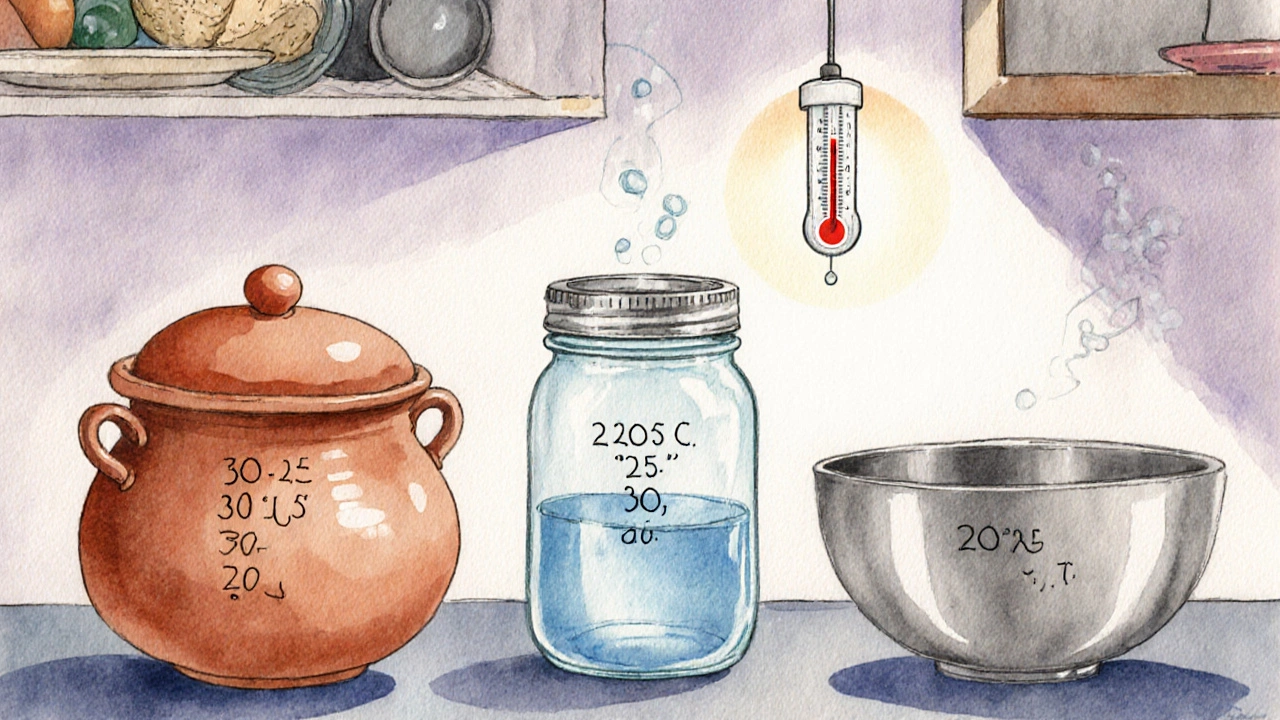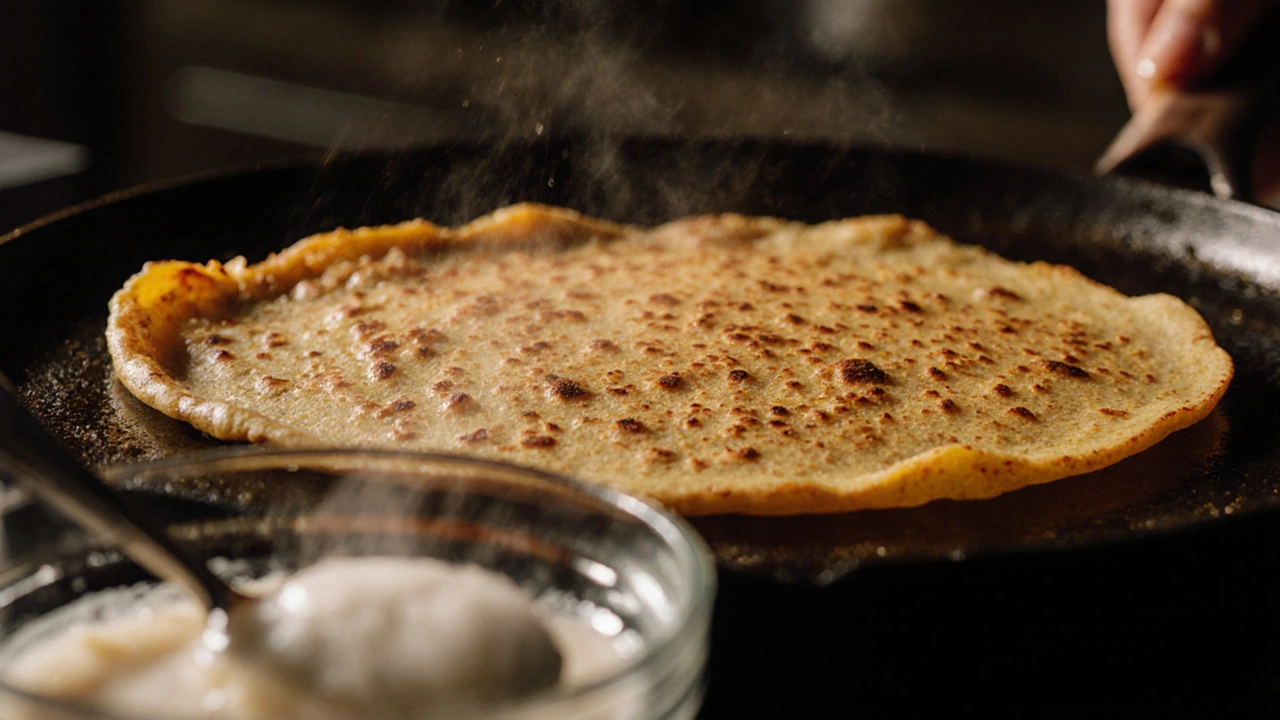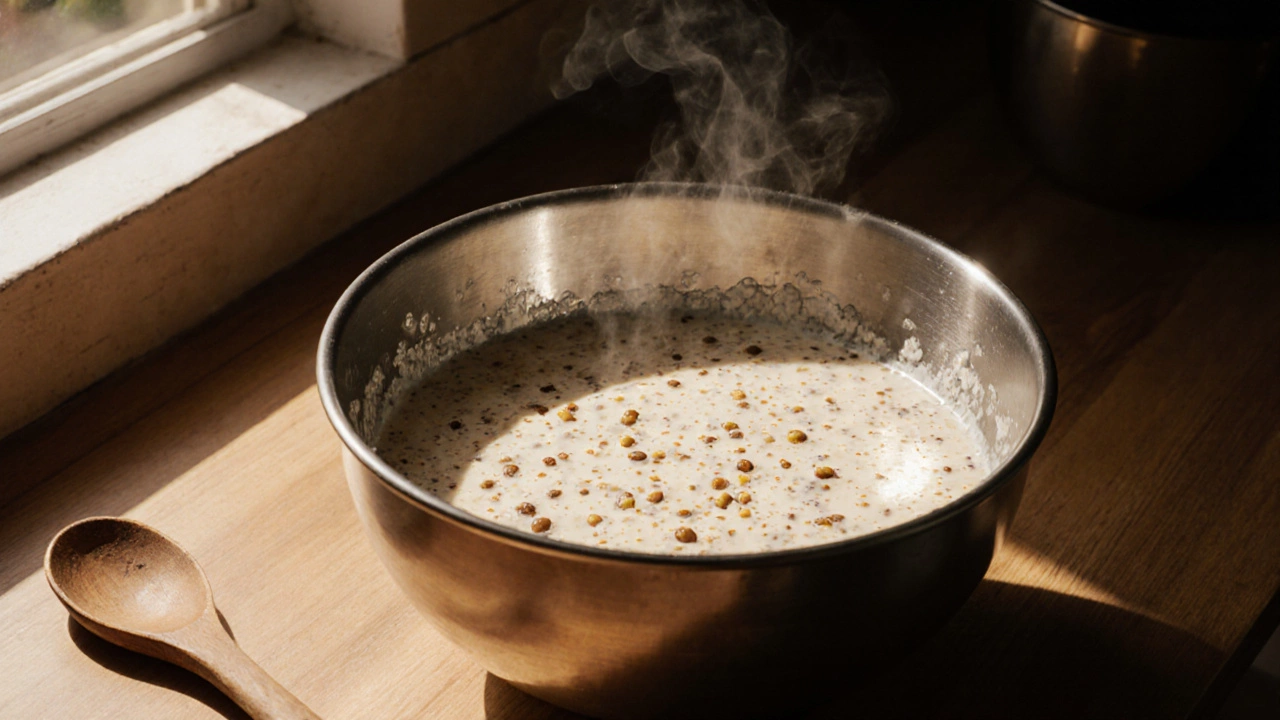Dosa Fermentation Time Calculator
Fermentation Time Calculator
Fermentation Time Estimate
Key Indicators
Check for these signs when batter is ready:
- Bubbles on surface
- Mild sour aroma
- Thick but pourable texture
- Rises in 5-10 minutes
Getting the perfect Dosa batter is a mix of science and tradition. The big question most home cooks face is: dosa batter fermentation time. Too short and the dosas stay flat and dense; too long and they turn sour and may not spread well. Below you’ll find a step‑by‑step guide, the factors that change the clock, and practical ways to know when your batter is ready.
Quick Takeaways
- At 30‑35°C (86‑95°F) expect 8‑12hours for a fresh batch.
- Cooler kitchens (20‑25°C) need 12‑20hours; use a warm spot or oven‑light.
- Watch for bubbles, a pleasant aroma, and a slightly thickened texture.
- If batter smells acidic or separates, it’s over‑fermented.
- Keep a small portion as a starter for the next batch to shorten time.
What Actually Happens During Fermentation?
Fermentation is a natural metabolic process where lactic acid bacteria and wild yeasts break down the starches in rice and the proteins in urad dal. The by‑products - carbon dioxide, acids, and a handful of flavor compounds - give the batter its airy lift and tangy scent.
In South Indian cuisine, this same principle creates both dosas and idli batter. While the end products differ in texture, the underlying microbiology is identical.
Key Factors That Influence How Long the Batter Ferments
Not all kitchens are created equal. Here are the five variables that shift the fermentation clock.
- Temperature: The higher the ambient temperature, the faster microbes multiply. At 30‑35°C the batter can double its microbial count every 2‑3hours.
- Climate humidity: Moist air slows down water loss, keeping the batter supple. Dry environments may need a longer rest.
- Ratio of rice to dal: More urad dal supplies extra protein, which fuels bacterial growth, often shortening the time.
- Quality of the starter: A well‑fed starter (a spoonful of previously fermented batter) can cut the clock by 3‑4hours.
- Container material: Clay pots retain coolness, extending fermentation, whereas glass or stainless steel warms up faster.

Typical Fermentation Times by Temperature
| Temperature (°C) | Typical Time (hours) | Notes |
|---|---|---|
| 30‑35 | 8‑12 | Warm kitchen or oven‑light; batter is airy and slightly sour. |
| 25‑30 | 12‑16 | Average indoor climate; may need a warm corner. |
| 20‑25 | 16‑20 | Cooler homes; place batter in a turned‑off oven or insulated box. |
| 15‑20 | 20‑28 | Winter months; consider a heating pad or sunlight. |
How to Know When Your Batter Is Ready
Even with a timer, the real test is sensory.
- Bubbles: Look for tiny bubbles on the surface and throughout the mixture.
- Aroma: A mild, slightly fruity smell signals healthy fermentation. A sharp vinegar scent means it’s past its prime.
- Texture: The batter should feel thick but pourable - about the consistency of a pancake batter.
- Rise test: Drop a spoonful in a shallow bowl; it should rise a few millimetres within 5‑10minutes.

Troubleshooting Common Issues
Problem: No bubbles after 12hours in a warm kitchen.
Solution: Check the starter. If you used a fresh batch of rice and dal without any previous ferment, add a spoonful of commercial yogurt (plain, unsweetened) or a bit of already fermented batter.
Problem: Batter smells overly sour or separates.
Solution: It’s over‑fermented. Use it quickly for a thin crepe‑style dosa, or discard the top layer and keep the rest for the next day.
Problem: Batter is too thick to spread.
Solution: Add a little water, 1‑2tablespoons at a time, and stir gently. Over‑diluting can reduce the rise, so aim for a smooth flow.
Tips for Consistent Fermentation Results
- Use the same rice-dal ratio each time (typically 3parts rice to 1part urad dal).
- Rinse rice and dal thoroughly before grinding; excess starch can hinder bacterial activity.
- Grind to a fine batter; larger particles ferment slower.
- Cover the container with a breathable cloth rather than airtight plastic to let gases escape.
- Maintain a starter culture: keep a small cup of fermented batter in the fridge and bring it to room temperature before mixing a new batch.
Frequently Asked Questions
Can I ferment dosa batter in the refrigerator?
Yes, but the process slows dramatically. Expect 24‑48hours at 4°C. This method is handy for hot summer months when a warm spot isn’t available.
Do I need a starter culture every time?
A starter speeds things up, but a fresh batch of rice and urad dal will ferment on its own given enough time and warmth. Using a starter is recommended for consistent results.
Is it safe to eat over‑fermented batter?
If the batter smells putrid or shows mold, discard it. A mildly sour, watery layer can still be cooked, but the texture will be off.
Why does my batter ferment faster in summer?
Higher ambient temperature boosts microbial metabolism, so the same mixture reaches peak activity sooner.
Can I add fenugreek seeds to speed up fermentation?
Fenugreek contains natural sugars that feed the bacteria, often reducing fermentation time by 2‑3hours.
With these guidelines, you’ll know exactly how many hours your dosa batter needs to ferment, no matter the season or kitchen setup. Happy cooking!
